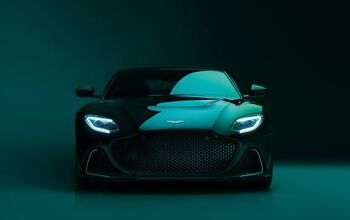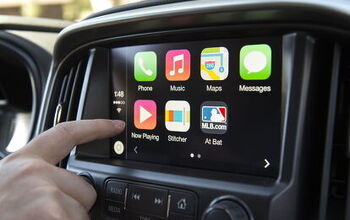PHEV Is Fine: Mitsubishi Says It Knows What Green Buyers Want

While the brand name inspires more than a few snorts of derision and jokes in North America, Mitsubishi, now backed by the mighty Renault-Nissan Alliance, carries greater clout overseas. The automaker’s Outlander PHEV outsells all other plug-in hybrids in the UK, and global sales of the brand’s vehicles are on the upswing.
Being a part of the alliance means Mitsu will soon have its hands on new architecture, but the brand claims it isn’t about to go all snobby with a line of dedicated electric car models. Sure, there’ll be EVs in the future, but they won’t be standalone models. The automaker claims the technology it’s most known for — plug-in hybrid powertrains — remains the best bet for most consumers, and that’s why it plans to focus mainly on PHEV.
Also, you really won’t need an EV if you buy the next-generation Outlander PHEV, claims Mitsubishi strategy boss Vincent Cobee.
Speaking to Autocar, Cobee said improvements in store for the second-generation Outlander PHEV will render the vehicle’s internal combustion engine mostly irrelevant. Right now, U.S. buyers (who really had to wait before getting their hands on the model) can expect 22 miles of gas-free driving before the ICE kicks in. In Europe, a different testing cycle puts the range at 31 miles.
“Battery EVs have a limitation in terms of range at the moment, and in some countries, that might not be the answer,” Cobee said, adding that Mitsu plans to outfit other models with the Outlander PHEV’s green tech. The executive seems to subscribe to the notion that it’s better having many people driving a plug-in hybrid than a handful of people driving an EV. Even better is building long-range PHEVs that still offers consumers the option of gassing up.
“The Outlander PHEV currently has an electric-only range of 31 miles, and we’ll extend that with the next-generation model: the aim is 80-100km [50-62 miles], which will be enough for most people to do the bulk of their journeys purely on electric power and live a largely EV lifestyle, but still be able to do longer trips when needed,” Cobee said, adding that Mitsubishi’s future lineup will contain fully electric vehicles, as well as hybrids and PHEVs.
No details were given as to which conventional models might get an EV makeover.
In the U.S., where the Outlander PHEV does battle with a range of (usually) smaller vehicles, brand-wide sales rose 8.4 percent, year over year, last month, with year-to-date volume up 17.1 percent. By the end of October, Mitsubishi sales had already created the six-figure mark — a hurdle the brand failed to clear from 2008 to 2016.
[Image: Mitsubishi Motors]

More by Steph Willems
Latest Car Reviews
Read moreLatest Product Reviews
Read moreRecent Comments
- ToolGuy I read in TTAC that EVs are useless and dead, just sayin.
- ToolGuy I am starting to question the love for our planet expressed by the oligopolists. Have I been lied to?
- NigelShiftright My favorite color on any current car is the "McLaren orange" on Subaru Crosstreks. Unfortunately I am about four inches too tall to fit behind the wheel of one.
- Bd2 This should solve some of those awkward styling elements on the first EV6 and doing so only 3 years into the product cycle will also be increasing it's collectible value at future Barret Jackson auctions . A youtuber I follow does expect the Kia EV6 to be among the pioneers of collectible electric cars. I recently traced my 1997 Toyota Supra Turbo for a Kia EV9.
- Redapple2 HK makes rubbish. Spend 10% more. Get 25 % better.


































Comments
Join the conversation
PHEVs are the best of both worlds. You have an electric car for short runs around town, and you also have unlimited highway driving range on gas. Thirty miles of EV doesn't sound like much, but if you did that every day, that's almost 11,000 miles per year. Somehow, my PHEV C-Max gets almost twice the MPG of my hybrid C-Max- and I drive it over 100 miles per day several times per week. For versatility and cost-effectiveness, it's the way to go. I'll settle for my 65 MPG, plus 80 cents of shore power per day. Even if you offered a wonder car capable of twice that efficiency, you're chasing diminishing returns. So I salute Mitsubishi's choice.
One suggestion to Mitsubishi: keep the DC charging port and put a 32A/7kW charger. Maybe switch to CCS for Europe?